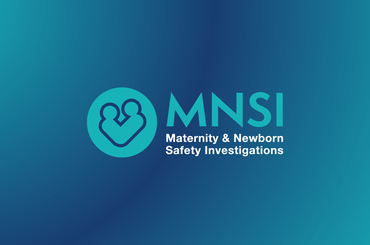
Zoe Munson has been a maternity investigator for six years, having previously worked in clinical leadership and patient safety roles in the NHS. She currently works for the Maternity and Newborn Safety Investigations (MNSI) programme and is studying for a MSc in human factors and ergonomics for patient safety.
On April 1st 2024, six months after the transition to being hosted by the CQC, MNSI made changes to their investigation reports and process. Zoe Munson, a maternity investigator, and chair of the investigation development group, sat down with MNSI’s editorial team to discuss the changes and how this will improve the investigations for trusts, families and the wider NHS.
Q1. Let’s start at the beginning. Why are things changing?
Having a culture of excellence and learning is a core value at MNSI. Co-developed by NHS Scotland, the Health Services Safety Investigation Body (HSSIB) and NHS England, the learning response review and improvement tool was used for an audit of our reports in autumn 2022. This tool is available to everyone to help identify ‘traps to avoid’ when doing system focussed investigations.
The audit, alongside further insights gathered from stakeholders, provided a catalyst to evolve how we were approaching and writing our investigations.
We trialled several changes to our investigation approach and report style. During a pilot investigation, the first draft of the new report template was created. Four other pilot investigations tested the changes to our investigation approach and report structure which helped us to develop and refine its content. The final version of the new template is being used for all referrals from the 1 April 2024. The pilots showed that the new report structure helps to highlight system-wide learning found during the investigation and improve inclusivity. Writing impactful, accessible reports provides MNSI with the greatest opportunity to share the learning from our investigations for the benefit of families, trusts and national bodies to inform safe maternity care.
Q2. That sounds great, what are the key changes that people are going to see?
Feedback from the audit, alongside recognised system thinking principles, was used to inform the development of the template. It was important the changes aligned with national publications so we took guidance from the Chartered Institute of Human Factors and Ergonomics White Paper, ‘Learning from Adverse Events’; (CIHFE,2020) the ‘Patient Safety Incident Response Framework’ (PSIRF) (NHS England, 2022); the Learn Together investigation guide; and NHS England’s supporting patient and family involvement in patient safety investigations. Recognising our role in modelling and encouraging excellence in healthcare investigations, we hope our new report style can support trusts when they do their own system focussed investigations. The report template has three main changes.
Personalisation
Firstly, the family will be asked if they would like the report to be personalised. That is, for the mother’s, birthing person's and/or baby’s name to be used in the report. In addition, with the guidance of the lead investigator, the family will have an opportunity to write a short paragraph about themselves or their baby. This is an example of how that paragraph might be written:
About baby Ria
Ria is the third child born to Shahina and Kaustav. Everyone has enjoyed getting to know him and are particularly happy that he is now home. His big sister, who is seven years old, is particularly keen to help with changing and feeding duties. Shahina and Kaustav hope this report makes a difference to other families birthing their babies at the Trust.
MNSI definitions of recommendations and safety prompts
Secondly, MNSI recognises that in a complex system such as healthcare, it is rarely possible to identify exact causes to an outcome. Instead, it is more helpful for safety investigations to consider the multiple contributory factors to what happened and changes to the work system that could reduce the chance of a similar event occurring. In support of this, our criterion for safety recommendations is changing. The new MNSI report template enables the investigation team to make safety recommendations whenever there is evidence that something needs to change to make care safer – whether or not it ‘caused’ the event being investigated. Furthermore, investigation teams can include ‘safety prompts’ in their investigation reports when they find safety issues that warrant further consideration, creating additional opportunities for learning and development.
Findings, safety recommendations and safety prompts
This report contains findings from our analysis of the evidence gathered during our investigation. The report may also contain safety recommendations and safety prompts.
Safety recommendations are made to an NHS organisation when the evidence indicates a change is needed to make care safer.
Safety prompts describe an action that may help to improve safety at a local level and where there was insufficient evidence to support a safety recommendation.
Not all reports will contain safety recommendations or safety prompts. On these occasions, maternity services are encouraged to use the findings within the report to promote and support learning.
Example MNSI safety prompt:
The investigation found the time on the theatre clocks and equipment in the operating theatre differ.
- Are there any barriers to ensuring the times are synchronised?
- Is there a checklist at the start of each procedure to acknowledge any discrepancies within the clocks with an operating theatre?
Format
Thirdly, there are changes to the layout and wording within the report.
- Terms of reference: This will still be informed by meetings with our clinical advisors and families. You will notice they will be more specific about which parts of a mother, birthing person and/or baby’s care the investigation will focus on.
- The safety event: Stakeholders will also notice that when describing the event that affected a mother, birthing person and/or baby, the investigation will focus on the aspects of care that are later discussed in the analysis section of the report. Information about the MNSI programme, which is shared within all reports, is now in the appendices. The appendices may also be used to share particular clinical details if these are agreed not to be needed in the main body of the report.
- Background and context: As in the PSRIF template that trusts are using or starting to use, we have added a background and context section. We found this allows the findings and analysis section to focus on the important system learning, along with explaining what factors contributed to the outcome and why decisions made sense at the time. We have had positive feedback from trusts and families about our definition boxes and you will be pleased to know these will still be included.
- Executive summary: Finally, there is an executive summary which is designed to be read as a stand-alone document and is an overview of what happened and the key learning. A summary of the safety recommendations and safety prompts will also be in this section.
Q3. Is there anything apart from the report structure that might be useful to know?
The role of an investigator is to understand what happened and why. This means gaining insight into the factors that contributed to an unexpected or unwanted outcome for a mother or birthing person and /or baby. This is essential for meaningful learning and in order for us to make recommendations that will truly make care safer for mothers and babies. Often this understanding will include an appreciation of how staff and organisations interpret national and local guidance; why decisions made sense to clinicians at the time and how staff adapt to uncertain and ever-changing situations. MNSI investigators use different methods to help analyse information provided to them through interviews with staff, or from the clinical notes to name just a couple of forms of evidence. Since the COVID-19 pandemic, interviews with staff have mostly been virtual through the MS Teams platform. Going forward investigators will be more likely to arrange visits to trusts to observe the clinical environment and to see work as it is being done. This may also include focus groups or a walk-through analysis to help understand a specific process or task. The pilot investigations showed the value of these methods in helping to gain a richer and deeper understanding of the work system and context within which a mother, birthing person or baby’s care took place in.
Q4. So, what next?
We have completed the training programme developed for the internal team and everyone is excited to start using the new report template.
All new referrals from the 1 April 2024 are using the template. It will take a while before this change translates through to the reports shared with trusts and families and there will be a period of transition where some investigations will be on the old template, and some will be on the new. Like any quality improvement project, there will be an evaluation process which will inform further changes to the report and our processes in the future.
"The programme began in 2018 and since that time we have continuously looked to develop our approach and reports. The work to implement the changes for our reports has been in progress for over a year with the opportunity to pilot and receive feedback from families and trusts . We know from those we work closely with our collective overall ambition is to make our maternity services safe. The new report template demonstrates how MNSI is supporting families and trusts to understand where further improvements are needed to make this ambition a reality."
Sandy Lewis, Director of the Maternity Investigation Programme
Feeback from pilot trusts
“I really liked the executive summary in particular.”
“Good snapshots of the findings, safety recommendations, and observations, but presented in in a way that it still has context to it.”
“It felt a lot more personal. I think as a report that's owned by the family, I think it's something that I would be really happy to receive as a family”.
“Very, very much in support of it …”
“I thought it was definitely more slim-lined but not in an inappropriate way.”
Internal feedback
“Training was useful, practical and informative and will really help when using the new template.” (Maternity Investigator, MNSI)
“The training was really excellent. Very informative and interactive, and there were opportunities for lots of discussion on how we are taking the report forward. The new approach is both positive and encouraging, as we are now making conscious effort to shift to more system based investigations.” (Maternity Investigator, MNSI)
“Excellent report, serves as a potential exemplar for maternity based investigations.” (Human Factors Specialist, HSSIB)
“It reads better, is more informative regarding events and the investigative approach. A receiving party (e.g. the trust) will be more receptive to findings/recommendations when laid out in this manner.” (Educationalist, HSSIB)
If you have any questions about the new report template, please contact your lead maternity investigator or email enquiries@mnsi.org.uk
Related news
Inspiring inclusion and empowering MNSI investigators

Why it made sense at the time: Local rationality questions for healthcare investigations

MSNI Ambitions for 2024
